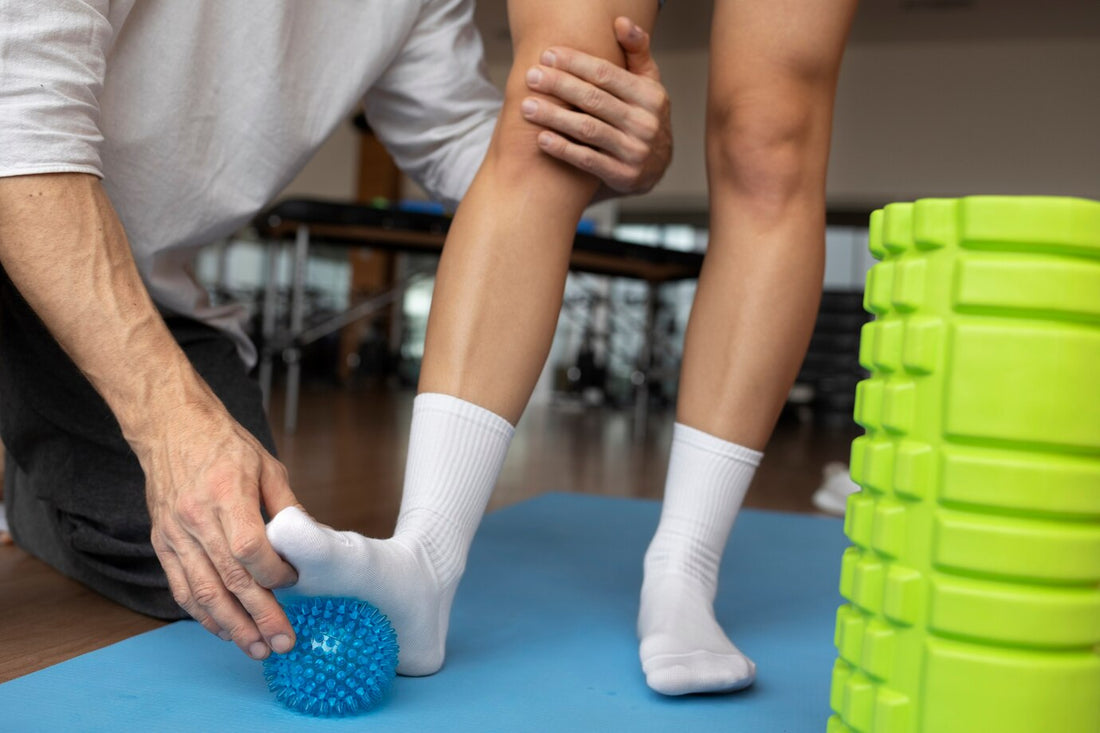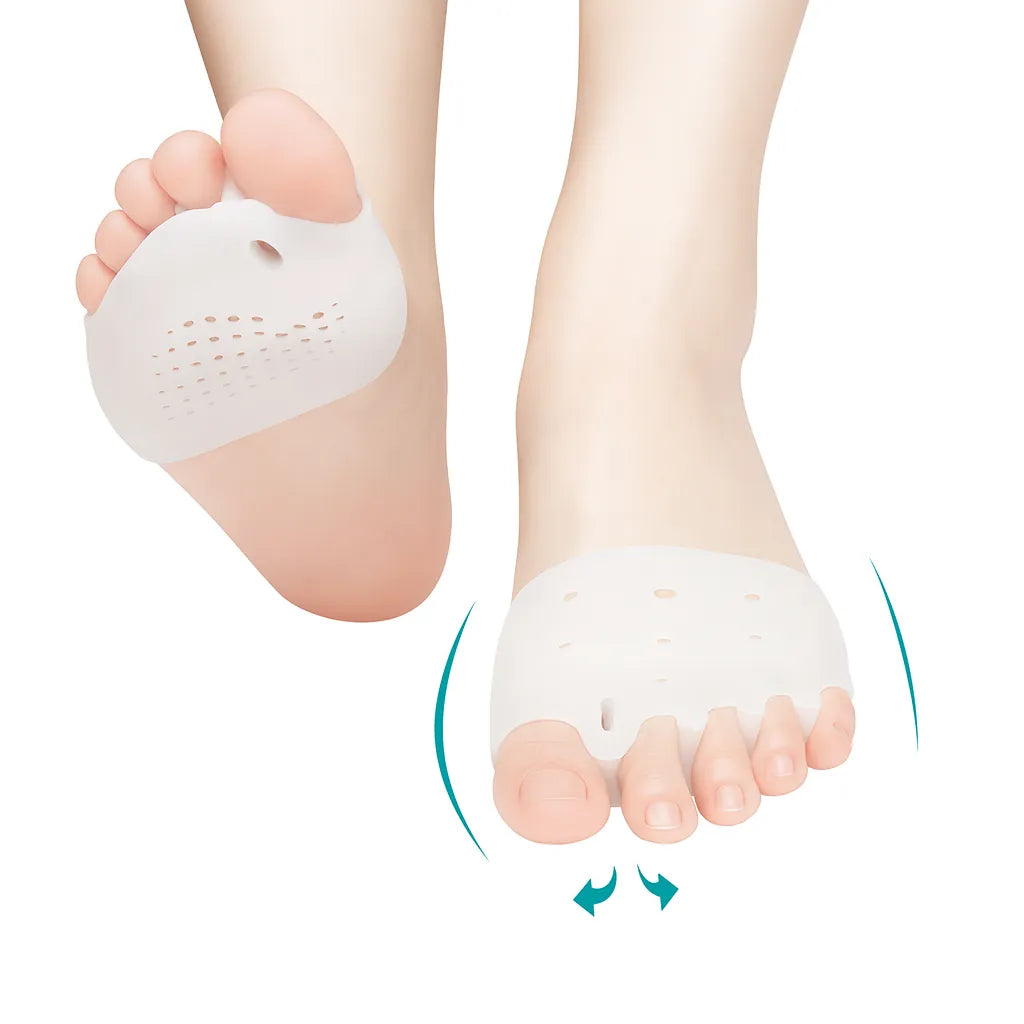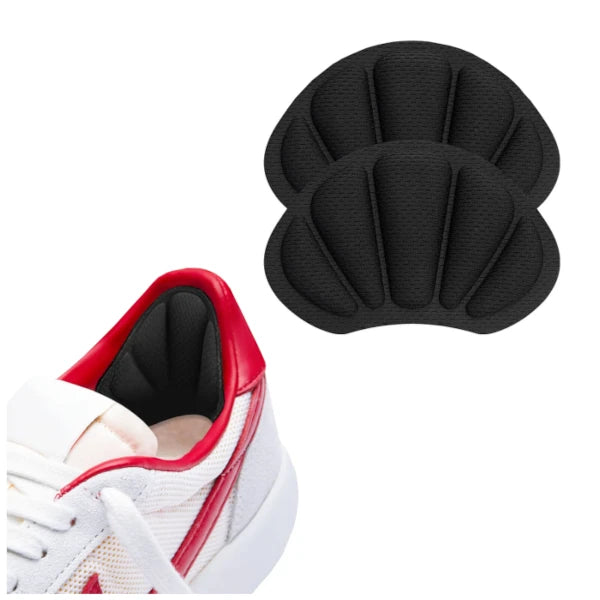
Deciphering Foot Pain: A Comprehensive Guide
Share
Decoding Foot Pain: A Complete Guide
Foot pain can be a real game-changer, affecting our daily activities and overall well-being. Understanding the ins and outs of foot pain is crucial for effective management and treatment. In this comprehensive guide, we will dive into the world of foot pain, deciphering its causes, symptoms, and potential remedies. From ill-fitting footwear to underlying medical conditions, we'll explore the various factors that contribute to foot pain. By gaining a better understanding of this prevalent issue, you can take proactive steps towards finding relief and regaining your mobility. So let's jump right in and unravel the mystery behind foot pain.
Mechanism of Foot Pain
Understanding the mechanism behind foot pain is crucial for effectively diagnosing and treating this common problem. Foot pain can stem from various structures such as bones, muscles, ligaments, and nerves. It typically occurs due to inflammation, injury, or overuse.
Inflammation, Injury, and Overuse
Foot pain can be categorized into different types based on its underlying mechanisms.
- Pathological foot pain arises from conditions like arthritis or plantar fasciitis where there is inflammation in the affected area.
- Physiological foot pain occurs due to injury or trauma to the foot, such as fractures or sprains.
- Neuropathic foot pain results from nerve damage that causes abnormal sensations like tingling or burning.
- Chronic foot pain refers to persistent discomfort lasting more than three months.
Diagnosis and Treatment
Understanding the mechanism of foot pain helps healthcare professionals accurately diagnose the condition and develop appropriate treatment plans. Here are some key points related to diagnosis and treatment:
- Proper assessment of the patient's medical history and physical examination is essential for identifying the cause of foot pain.
- Imaging tests like X-rays, MRIs, or ultrasounds may be utilized to visualize any structural abnormalities.
- Treatment options include rest, ice therapy, physical therapy exercises, orthotic devices (such as shoe inserts), medication (like nonsteroidal anti-inflammatory drugs), and in severe cases, surgery.
By deciphering how foot pain occurs at a physiological level, healthcare providers can tailor their approach for optimal management. It's important for individuals experiencing foot pain to seek professional help rather than self-diagnosing or self-medicating.
Types of Foot Pain
Foot pain can be a real pain in the... well, foot! But did you know that there are different types of foot pain? Let's dive into some common types and what sets them apart.
Plantar Fasciitis
One type of foot pain that often plagues people is plantar fasciitis. This condition occurs when the thick band of tissue connecting your heel to your toes (the plantar fascia) becomes inflamed. The result? Sharp, stabbing pain in the heel or arch of your foot, especially with those first few steps in the morning.
Achilles Tendonitis
Another pesky culprit behind foot pain is Achilles tendonitis. This condition affects the Achilles tendon, which connects your calf muscles to your heel bone. When this tendon gets irritated or inflamed, it can cause discomfort and stiffness in the back of your leg or near your heel.
Metatarsalgia
Ever feel like you're walking on pebbles or have a burning sensation in the ball of your foot? You might be experiencing metatarsalgia. This condition typically affects the metatarsal bones in the front part of your feet and can occur due to various factors such as high-impact activities, ill-fitting shoes, or excessive pressure on the area.

Identifying these specific types of foot pain is crucial for getting appropriate treatment. After all, treating plantar fasciitis requires a different approach than addressing metatarsalgia. So if you're dealing with chronic foot pain, it's important to consult with a healthcare professional who can help pinpoint the exact type and provide tailored treatment options.
Now that we've deciphered some common types of foot pain, let's move on to understanding their symptoms and causes!
Causes of Heel Pain
Heel pain can be a real pain in the... well, heel! There are several potential causes for this discomfort, and it's important to understand them in order to find relief. Let's dive into some common culprits behind heel pain.
Overuse or Repetitive Strain
One major cause of heel pain is overuse or repetitive strain on the feet. Think about it like this: if you're constantly putting stress on your heels by running, jumping, or even just standing for long periods of time, it's no wonder they might start to ache. This type of strain can lead to conditions such as plantar fasciitis, where the tissue connecting your heel bone to your toes becomes inflamed and painful.
Improper Footwear
Wearing the wrong shoes can also contribute to heel pain. If you're rocking those super stylish but unsupportive flats all day, your poor heels are going to suffer the consequences. Similarly, shoes that don't fit properly or lack proper cushioning can put extra pressure on certain areas of your feet, leading to discomfort and potential heel issues.
Biomechanical Abnormalities
Sometimes, the way our bodies naturally move can contribute to heel pain. Biomechanical abnormalities like flat feet or high arches can throw off our foot alignment and put excessive strain on certain areas. This strain often lands right on our poor little heels.
So there you have it - a breakdown of some common causes behind that pesky heel pain. Whether it's from overuse, improper footwear choices, or biomechanical abnormalities, understanding these factors is key in finding ways to alleviate and prevent discomfort in our precious heels!
Managing Heel Pain
Rest and Ice Packs
One of the first steps you can take is to give your affected foot some rest. Taking a break from activities that exacerbate the pain can help alleviate discomfort and promote healing. Applying ice packs to the affected area can reduce inflammation and provide temporary relief.
Stretching Exercises and Physical Therapy
To improve flexibility, stretching exercises are often recommended for managing heel pain. For foot strengthening you can do exercises which target key muscles in the foot and calf, such as the Achilles tendon, helping to alleviate tension and promote healing. In some cases, physical therapy may also be prescribed to further enhance recovery.
Supportive Shoes with Cushioned Soles
Wearing supportive shoes with cushioned soles can make a significant difference in managing heel discomfort. These types of shoes provide added support and shock absorption, reducing strain on the heels while walking or standing. Look for footwear specifically designed for heel pain or plantar fasciitis, as they offer optimal arch support and cushioning.
Lifestyle Changes
In addition to specific treatments, making certain lifestyle changes can contribute to effective management of heel pain. Maintaining a healthy weight is crucial since excess weight puts additional stress on the feet. Losing weight through a balanced diet and regular exercise can relieve pressure on the heels and reduce discomfort.
Seek Professional Guidance
If you're experiencing persistent or severe heel pain that doesn't improve with self-care measures, it's essential to seek professional guidance from a healthcare provider or podiatrist. They can assess your condition more thoroughly, recommend appropriate treatment options tailored to your needs, and address any underlying issues contributing to your heel pain.
Deciphering Foot Pain
Deciphering foot pain can be a complex task, but by paying attention to certain factors, you can gain valuable insights into its causes and find effective treatment options. Analyzing the location, intensity, duration, aggravating factors, and associated symptoms of your foot pain is crucial in understanding its underlying issues.
Keeping a symptom diary can be immensely helpful in identifying patterns or triggers related to your foot pain episodes. By jotting down details such as when the pain occurs, what activities you were engaged in at the time, and any other relevant information, you can start noticing connections that may provide clues about the root cause of your discomfort.
Consulting a healthcare professional is essential for an accurate diagnosis and personalized treatment plan. They have the expertise to assess your symptoms, conduct necessary tests if required, and offer appropriate guidance based on their findings. Whether it's a podiatrist specializing in foot conditions or a general practitioner with knowledge about musculoskeletal health, reaching out to a medical expert will ensure that you receive proper care.
In some cases, additional diagnostic tools such as X-rays or MRIs might be necessary to get a clearer picture of what's happening inside your feet. These imaging techniques can help identify fractures, abnormalities in bone structure or alignment issues that may contribute to your foot pain.
Remember that everyone's experience with foot pain is unique. What works for one person may not work for another. Therefore, it's important to consult with professionals who can tailor treatment plans specifically for you.
Further Treatment Options for Foot Pain
Now that you have a better understanding of foot pain, it's time to explore further treatment options. Remember, everyone's experience with foot pain is unique, so finding the right solution may require some trial and error. Don't be discouraged if the first approach doesn't provide immediate relief - there are plenty of alternatives to explore.
One effective treatment option is physical therapy, which can help strengthen your feet and improve their flexibility. Orthotic inserts or custom-made shoes can provide much-needed support and alleviate pressure on specific areas of your feet. In some cases, medications or injections may be prescribed to reduce inflammation and manage pain. Remember to consult with a qualified healthcare professional before pursuing any new treatment options.
In conclusion, deciphering foot pain can be a complex process, but by understanding its mechanisms, types, causes, and management techniques, you're equipped with valuable knowledge to take control of your foot health. Take proactive steps towards addressing your foot pain and don't hesitate to seek professional guidance if needed. Your feet deserve the care they need for you to stay active and comfortable.
FAQs
What are some home remedies for relieving foot pain?
There are several home remedies that may help relieve foot pain. You can try soaking your feet in warm water with Epsom salt or massaging them with essential oils like peppermint or lavender. Applying ice packs or using over-the-counter topical creams can also provide temporary relief from inflammation and discomfort.
When should I see a doctor for my foot pain?
If you've tried self-care methods such as rest, ice packs, elevation, and over-the-counter pain relievers without improvement after a few days or if your foot pain is severe and accompanied by swelling or difficulty walking, it's important to seek medical attention promptly. A healthcare professional will be able to evaluate your condition thoroughly and recommend appropriate treatment options.
Are there any exercises I can do to alleviate foot pain?
Yes, there are exercises that can help alleviate foot pain. Stretching exercises like calf raises, toe curls, and ankle circles can improve flexibility and strengthen the muscles in your feet. You may also benefit from arch-strengthening exercises such as towel scrunches or using a resistance band.
Can wearing the wrong shoes contribute to foot pain?
Yes, wearing ill-fitting or unsupportive shoes can contribute to foot pain. Shoes that are too tight, narrow, or lack proper cushioning can cause discomfort and put excessive pressure on certain areas of your feet. It's important to choose footwear that fits well and provides adequate support for your specific needs.
Is it normal for my feet to hurt after exercising?
It is common for your feet to feel sore after exercising, especially if you've engaged in activities that put a lot of stress on them. However, if the pain persists or becomes severe, it may be a sign of an underlying issue such as plantar fasciitis or stress fractures. If you're concerned about your post-exercise foot pain, consult with a healthcare professional for an accurate diagnosis and appropriate treatment recommendations.
Author Bio

Marlene Carvalho
Certified Sports Physiotherapist of Elite and Olympic athletes; Performance Coach to racing drivers
Marlene Carvalho is a sports physiotherapist passionate about all things sports.













